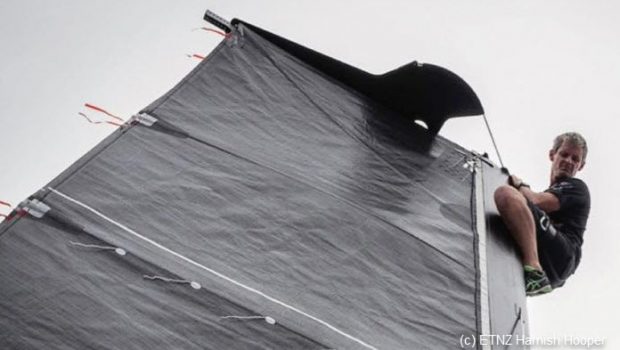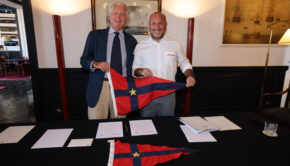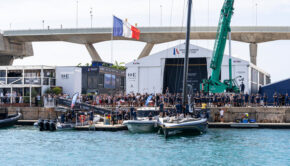A Wing That’s Not a Wing
Published on August 29th, 2018
Jack Griffin shares some insight about the upcoming 2021 America’s Cup in his Cup Experience publication.
In San Francisco in 2013, it took 30 to 40 people around an hour to install the wing in an AC72 and launch the boat. And about the same effort to get the boat out of the water and the wing back in the shed. In Bermuda in 2017 the same operations for an AC50 took slightly fewer people and slightly less time, but still required special logistics and a big effort.
ETNZ declared that for the 2021 America’s Cup, they would return to soft sails that could be dropped without pulling the mast out of the boat. The AC75 will have a double luffed mainsail – to try to achieve some of the efficiency of the wing but using a hoistable soft sail.
I’ve been told that the mainsail is small enough that in most conditions, the gennaker, or more correctly, the Code 0, will be needed to provide enough power for foiling. Remember that Oracle took the bowsprit off their AC75 their AC72 mid-way through the 2013 Match, to reduce windage, since in moderate to strong wind, the power of the wing rendered the gennaker of no use; it was just a source of drag. Oracle only re-installed the longer bowsprit and used the gennaker for Race 13 and Race 16 – on very light air days.
It will be interesting to learn more about how efficient the AC75 mainsail will be. The top of the mainsail must have airbags or solid buoyant material providing 300 kilos of buoyancy, to prevent turtling when the boat capsizes. No inflatable battens are allowed. There are detailed restrictions on how the battens in the two skins may be connected to each other.
Team New Zealand has done some tests of a double luff mainsail. The gantry at the top of the mast can help control twist, but twist will mainly be controlled by leech tension and leech lines. Compare this with the rigid wing sail: Internal controls set the shape; there was no mainsheet needed to tension the leech. With the double skinned mainsail on the AC75 there is likely to be much more trimming needed to adjust the two skins after each tack or gybe.
On August 31, the teams are due to receive the drawings of the one design mast and the specifications for the mast’s standing rigging. Each team will build their own masts, with British challenger INEOS TEAM UK announcing that Southern Spars would be their mast supplier. The AC75 Class Rule states how the rigging will be supplied, with that decision being the AEROrazr brand from Future Fibres.










 We’ll keep your information safe.
We’ll keep your information safe.